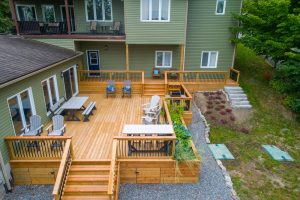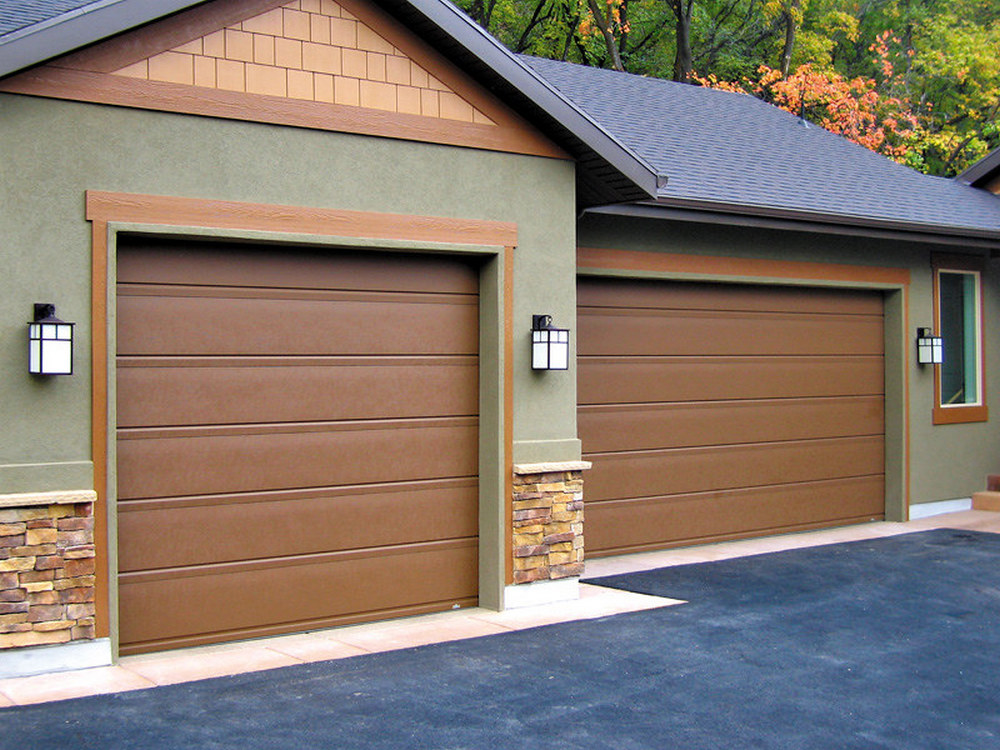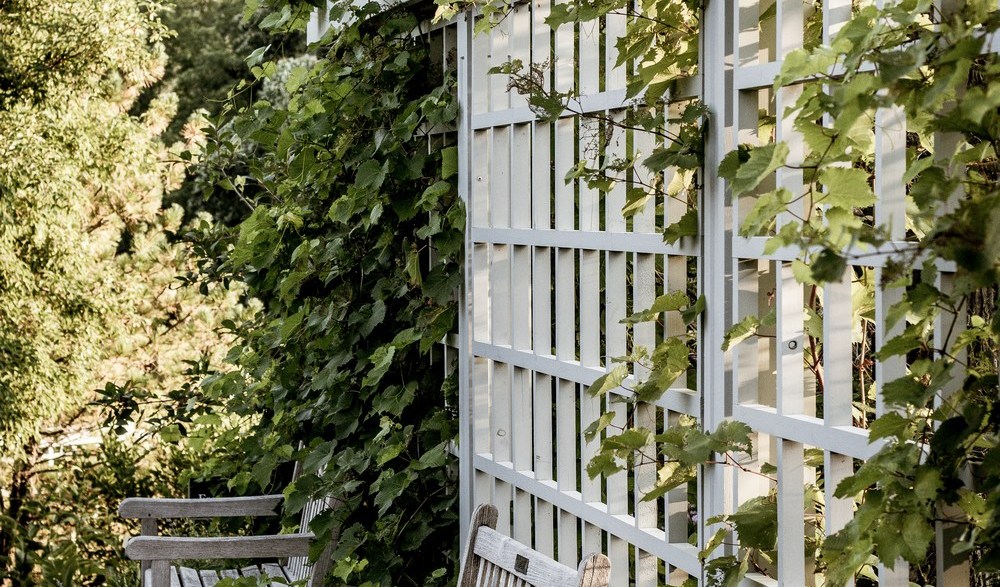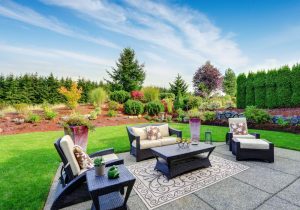Last Updated on August 22, 2024 by teamobn
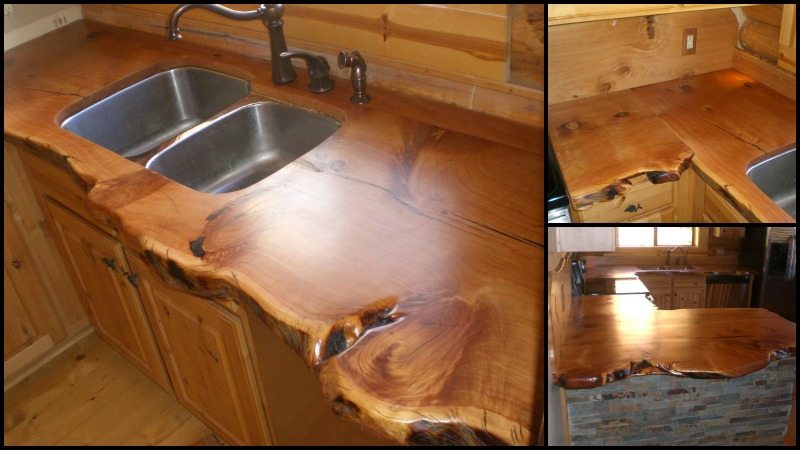
A cabin or a rustic-designed house is not complete without a rustic kitchen countertop. If you’re (re)designing your home or kitchen for a rustic look, don’t forget t considers this Rustic Timber Countertop’s wonderful inspiration!

The kitchen is one of the busiest and most used areas in any house. But many homeowners don’t give much thought to their kitchen design as much as they do bedrooms or living areas. The owners of these kitchen countertops, however, must really love the rustic design and spending time in the kitchen!
A well-designed kitchen makes eating and cooking a pleasure. It also makes your life easier because you can spend more time working in the kitchen and less on chores.
Despite being popular in the past, solid wood has always been the choice of the rich and famous. Timber countertops are expensive to maintain, especially when compared to other options that are cheaper and more durable.
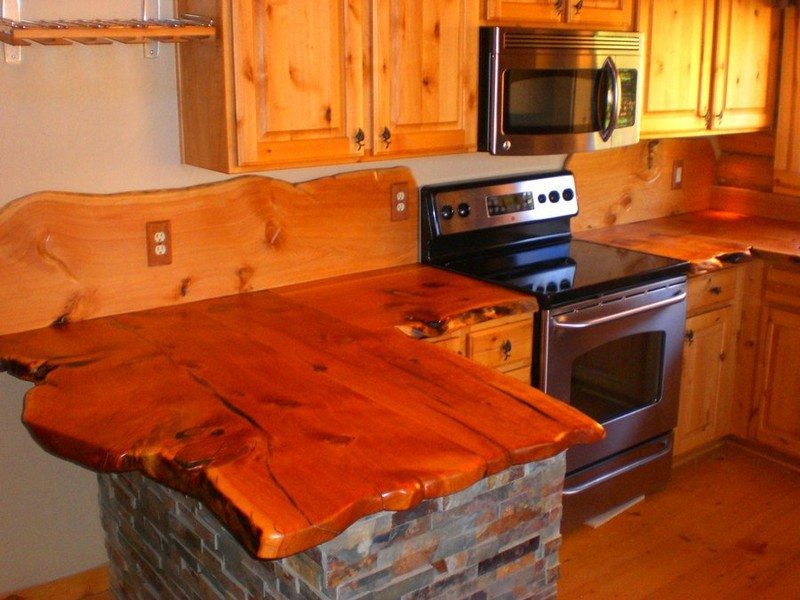
This is changing today because new advances in technology have made solid wood more affordable and more durable. The versatility that timber countertops offer has recently made them a popular choice, especially with those that want to add a unique look to their homes.
A lot of people want a countertop that is both unique and natural at the same time. Timber countertops provide homeowners with the opportunity to achieve this.
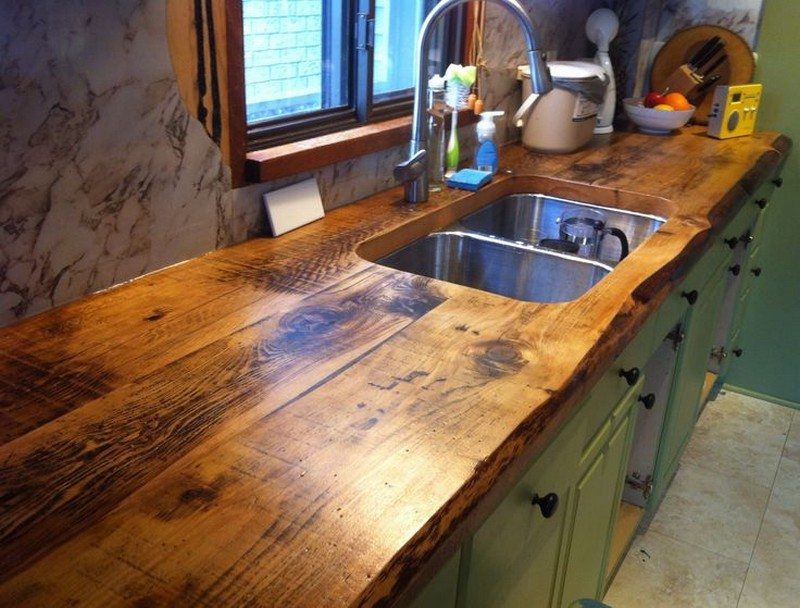
Factors to consider when buying Timber Countertops.
The cost of timber countertops will depend on many variables such as the type of wood, finish, thickness and the location of the mill. Obviously the end result will be directly affected by these choices so let’s have a look at each one in more detail.
Type of Wood
Timber countertops add warmth and natural beauty to any kitchen, blending seamlessly into both modern and traditional designs. As you explore the options for timber countertops, the type of wood you choose plays a crucial role in both the appearance and functionality of your countertops. Here’s a closer look at how different types of wood can impact your kitchen’s aesthetic and durability.
Affordable Wood Options
When budget is a consideration, opting for more affordable woods like oak, pine, or construction-grade pine is a practical choice. These woods offer a balance of durability and cost-effectiveness, making them accessible for a wide range of homeowners. Oak, known for its strength and grain pattern, brings a classic look that complements a variety of kitchen styles. Pine, while softer than oak, offers a lighter color and a more casual aesthetic that can brighten up a space. Construction-grade pine provides a rustic feel with a more pronounced grain, ideal for those seeking a farmhouse or country kitchen vibe.
Premium Hardwood Options
Hardwoods including walnut, ash, or maple are great options for those who want a more opulent and durable countertop. With its rich, dark tones, walnut really stands out and gives any kitchen complexity and elegance. Not only is it lovely, but it’s also quite strong, resisting dents and scratches far better than softer woods.
Ash gives a modern appearance with its light color and strong grain and the hardness required in a busy kitchen. Among the toughest woods available, maple has a fine, consistent grain that can be stained or finished to complement any décor. A family kitchen would find it perfect for its resistance to wear and durability.
Considerations for Wood Selection
Choose the type of wood for your countertop based on your kitchen’s overall design and degree of maintenance you are ready for. Though more expensive, softer woods like pine demand more maintenance because of their sensitivity to scratches and dents. Though more costly, hardwoods are a good investment for busy kitchens since they can withstand more wear and tear and provide better lifetime.
The appearance and utility of your kitchen will be much enhanced by the type of wood you choose for your timber counters. Whether your kitchen’s design calls for the elegance of walnut or the affordability of pine, both woods have special qualities and advantages.
Understanding the variations between these woods will help you to make a wise choice that combines durability, cost, and beauty to guarantee that your kitchen not only looks fantastic but also satisfies daily use requirements.
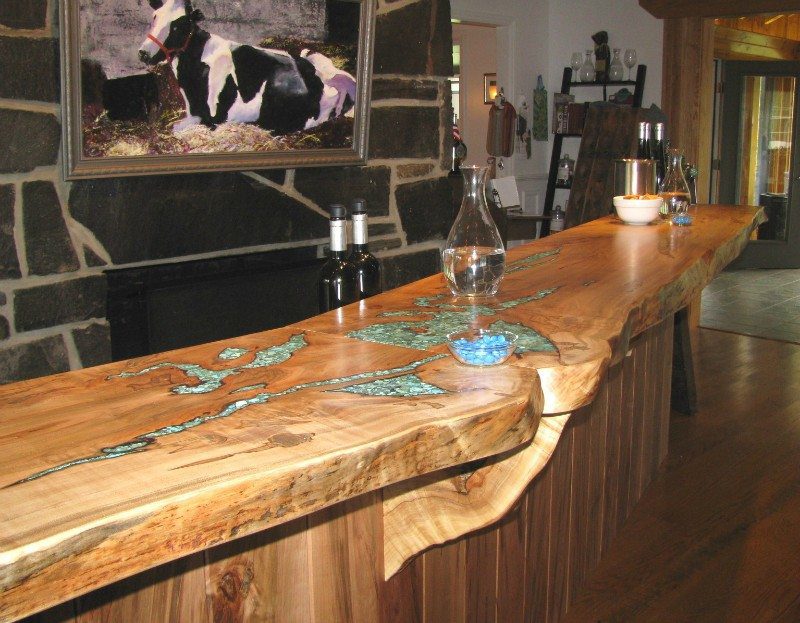
Finish of the Wood
The finish of the wood is a pivotal aspect when selecting timber countertops, as it greatly influences both the aesthetic appeal and the functional longevity of the counters. A proper finish not only enhances the natural beauty of the wood but also plays a critical role in protecting the surface from everyday wear and tear, moisture, and stains.
Importance of Choosing the Right Finish
When choosing timber countertops, the selection of the finish can determine the ultimate look and durability of your counters. The finish affects the wood’s color and its ability to resist moisture, which is crucial in a kitchen environment where exposure to water and spills is common. A suitable finish ensures that your timber countertops not only look stunning but are also practical for daily use.
Types of Finishes for Timber Countertops
- Clear Finish: A clear finish is popular for those who wish to preserve and highlight the natural color and grain of the timber countertop. This type of finish allows the wood to age naturally, gradually developing a richer patina over time. While a clear finish showcases the wood’s authentic beauty, it offers minimal protection against moisture. Timber countertops with a clear finish may require more frequent maintenance and care to prevent water damage and staining.
- Semi-Transparent Stain: A semi-transparent stain is a great choice for timber counters if you want more protection. This finish lets some grain show through while yet penetrating the wood to act as a barrier against moisture. Semi-transparent stains can, however, gradually change the original color of the wood. Those who want more moisture resistance but still want their timber countertops to look naturally might take color into account.
Maintaining Finished Timber Countertops
Keeping your timber countertops looking great and functioning as they should depends on keeping their finish intact. Maintaining the integrity and look of the wood can be achieved with regular cleaning using suitable wood cleaners and periodic finishing reapplication.
More regular maintenance may be required to handle any moisture-related problems on clear finish timber counters. On the other hand, counters with a semi-transparent stain might need less maintenance but should be watched for any color changes that would compromise the general appearance of your kitchen.
Achieving the intended aesthetic and guaranteeing the lifetime of your investment depend on choosing the appropriate finish for your timber countertops. Whether your preferred finish is clear for its natural look or a semi-transparent stain for maximum protection, both choices call for careful thought of their maintenance requirements and effect on the appearance of the wood. Knowing these elements will help you to be ready to appreciate strong and beautiful timber counters in your house.
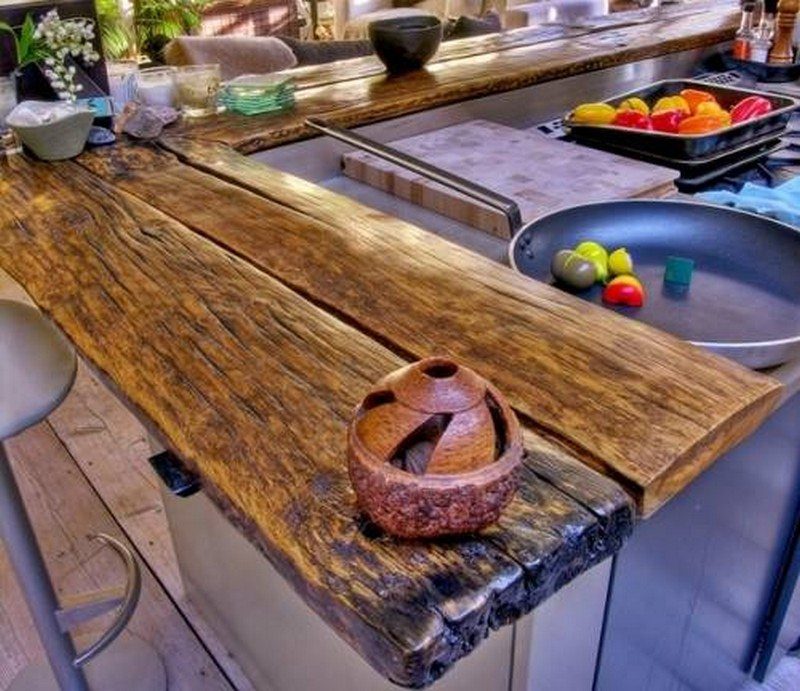
Thickness of the Wood
The thickness of the wood is a crucial consideration when purchasing timber countertops, as it directly impacts the countertop’s durability, aesthetic, and cost. Understanding how thickness affects these factors can help you make an informed decision that aligns with both your design goals and practical needs.
Impact of Thickness on Quality and Cost
Generally, a thicker timber countertop not only suggests a higher quality of wood but also reflects a higher price point. Thicker wood provides a more robust and stable surface, which is essential in high-use areas like kitchens. The substantial presence of a thick countertop can also enhance the overall look of the kitchen, adding a sense of luxury and permanence. However, it’s important to consider that the increased material volume makes these countertops more expensive. The investment in a thicker timber countertop, though, can be justified by its longevity and the aesthetic appeal it adds to your space.
Durability and Longevity
Additionally very important for the longevity of timber countertops is thickness. A thicker countertop is more naturally robust, which helps it to resist the demands of daily kitchen work. This covers everything from the general wear and tear from different kitchen appliances and tools to the effects of chopping and cooking food. Furthermore, thicker wood is less likely than thinner substitutes to warp and crack over time, which can be especially crucial in surroundings where the wood is subjected to fluctuations in temperature and moisture.
Practical Considerations
Your choice of thickness for your timber countertop should take practical considerations as well as visual impact. Thicker counters could call for extra support structures, particularly in bigger kitchens, to guarantee stability and stop sagging. This might influence the general cost as well as the installation technique. Furthermore, the countertop’s edge profile—which is more noticeable with thicker wood—offers other design choices that might accentuate the style of your kitchen.
Choosing the correct thickness for your timber countertop guarantees a strong and useful surface as well as greatly enhances the appearance of the kitchen. The thickness of the wood will totally change the feel of your space, whether your main focus is a strong, commanding look with a thick slab or a more subdued, simplified countertop. Carefully weighing these factors will help you to make sure your timber countertop not only looks great but also satisfies daily use in your kitchen.
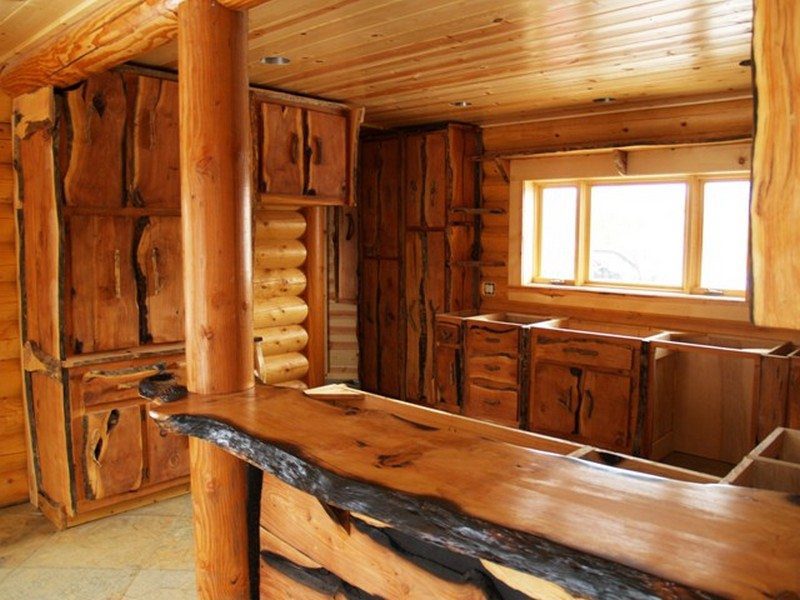
Location of the Mill
The location of the mill where the wood is sourced is also a factor to consider when considering timber countertops. The proximity of the mill to the forest determines the price, appearance, and quality of the wood.
For example, the closer the mill is to the forest, the more expensive the wood is. If the mill is far away from the forest, the wood is typically of lower quality.
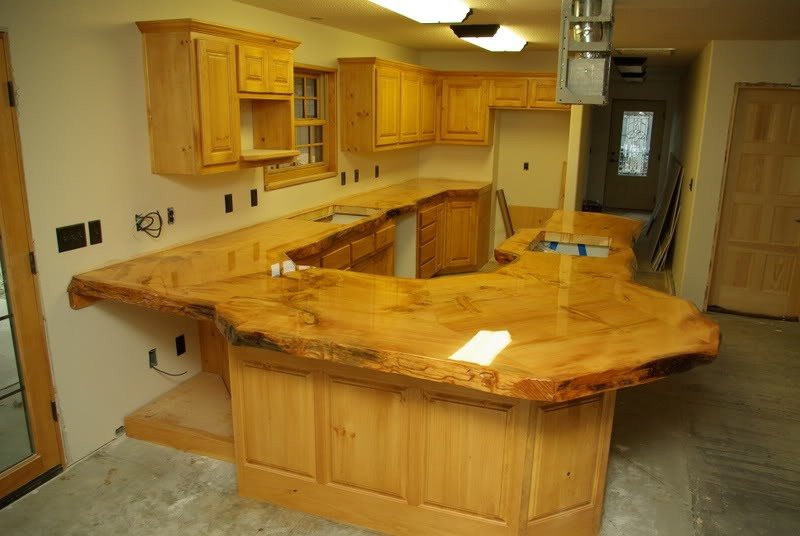
Rustic countertops are not for everyone – they are certainly a beautiful choice for some, but not everyone is looking for this. These counters do require a lot of extra maintenance, and have to be cleaned correctly if you don’t want to have issues.
But, countertops are best for homeowners who love an elegant kitchen designs. Take a look at all these rustic countertops and you’ll see how much the owners have invested to have a truly unique and lovely kitchen.
Well, what do you think? Do you, or do you know someone who will, want to have a rustic kitchen countertop?
Click on any image to start the lightbox display. Use your Esc key to close the lightbox.![]()
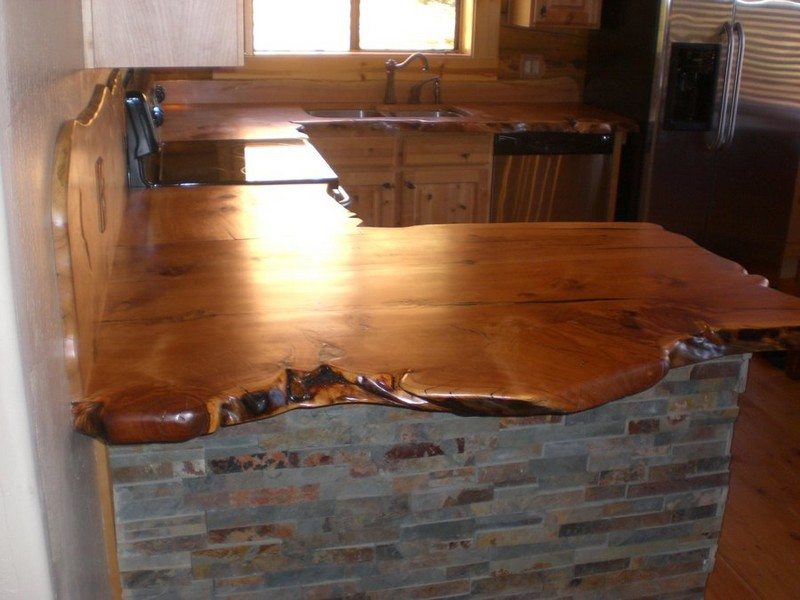
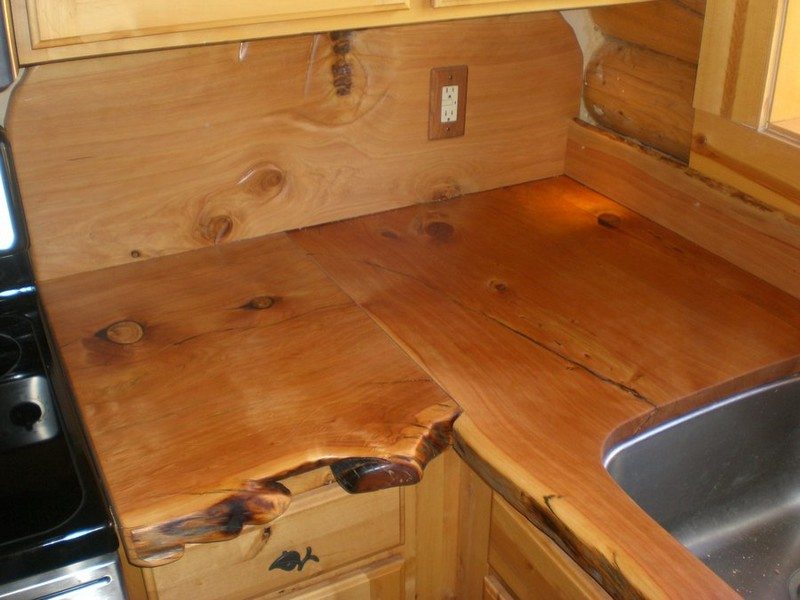
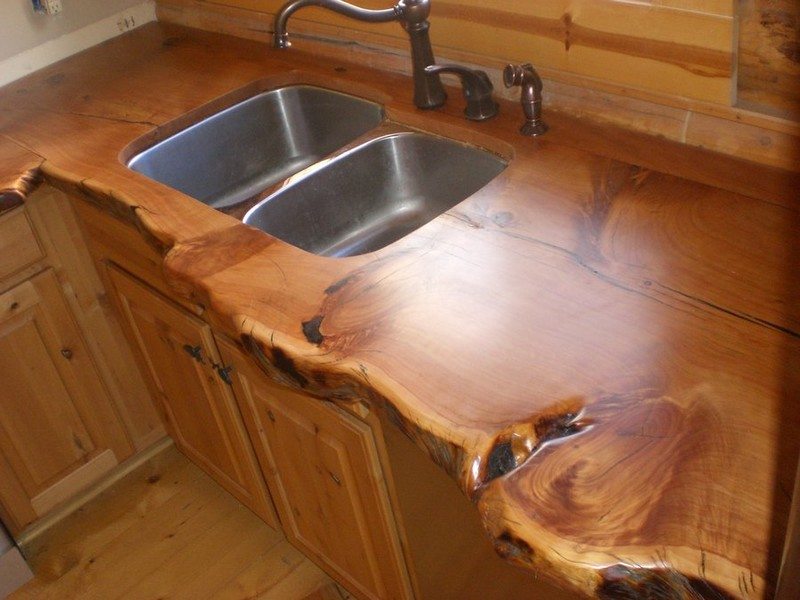
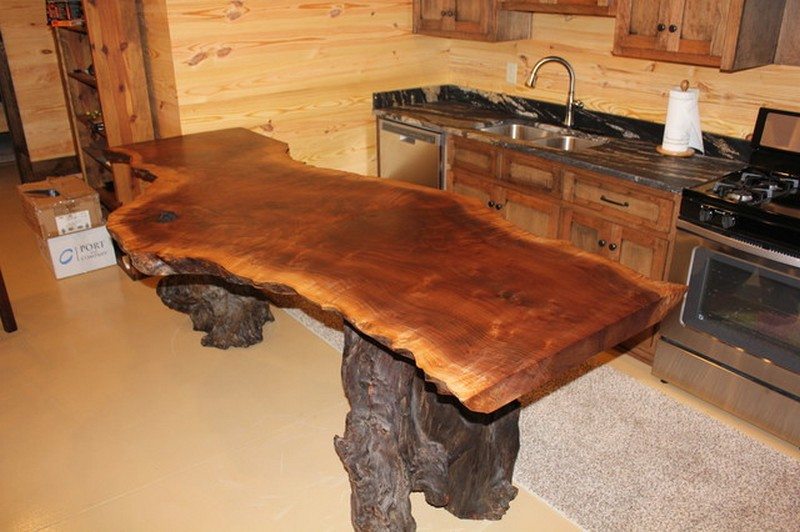



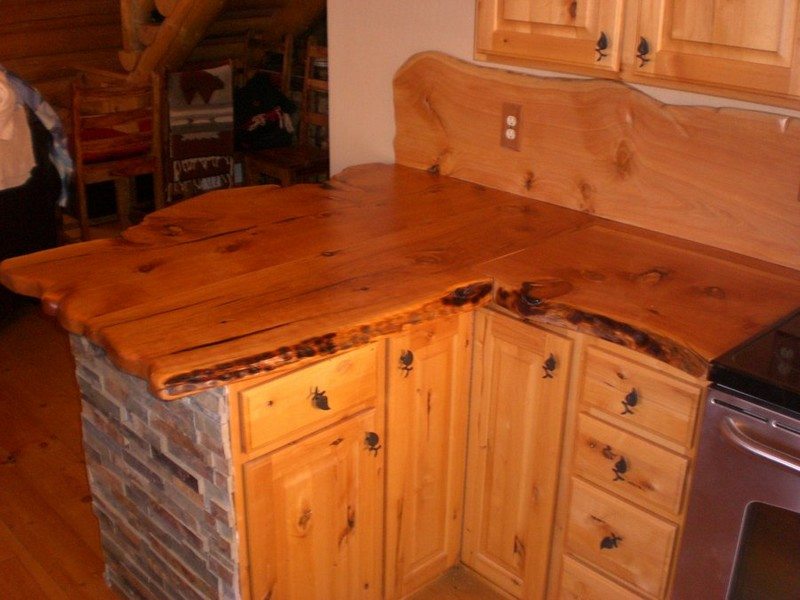
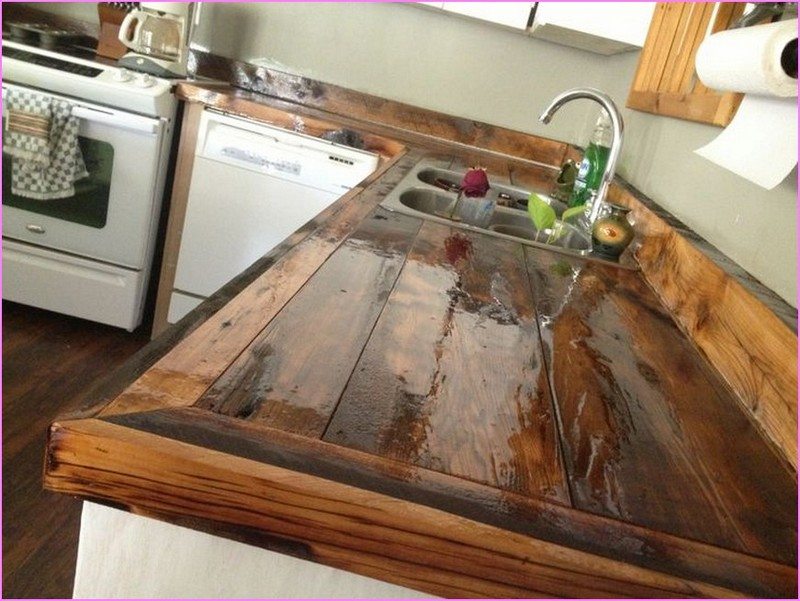



Conclusion
When buying a timber countertop, considering the type of wood, finish, thickness, and the location of the mill is essential. Each factor influences the countertop’s durability, appearance, and cost. Making informed decisions on these aspects will help you choose a perfect countertop that fits both your style and practical needs.

